On Georges Perec
On Georges Perec
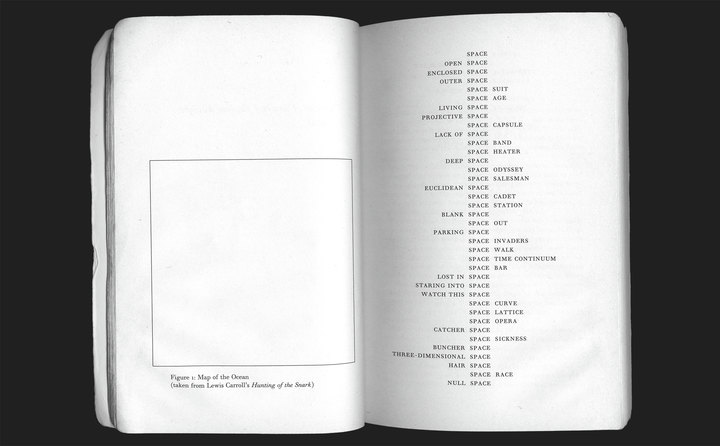
I am fascinated by the French writer Georges Perec (1936—1982). I first read Species of Spaces and Other Pieces (1974) and was hooked. It instantly appealed to my typographic sensibilities; the opening pages are striking, the homage to Lewis Carroll’s Hunting Of The Snark empty ‘Map of the Ocean’ to the exploratory ‘Space’ poem (above) are inspiring.
The first chapter ‘The Page’ is an enquiry into the physicality, function, form, design and legacy of the printed page. The layout is playful, experimenting with the formalities and conventions of the page, from the word to the sentence to the margin to the footnote, akin to Stéphane Mallarmé’s Un Coup de Dés Jamais N’Abolira Le Hasard (1897).
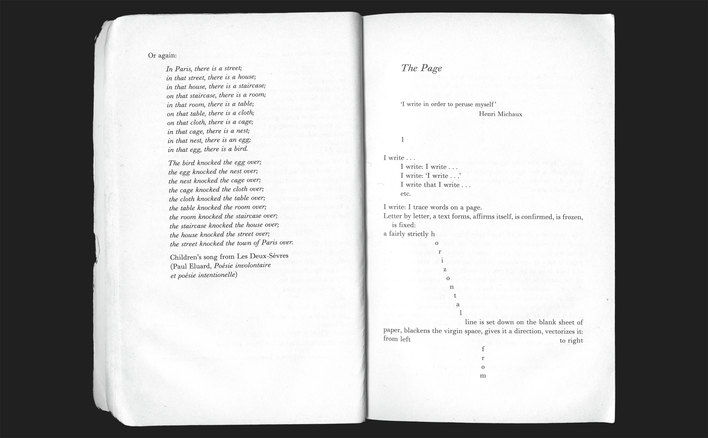
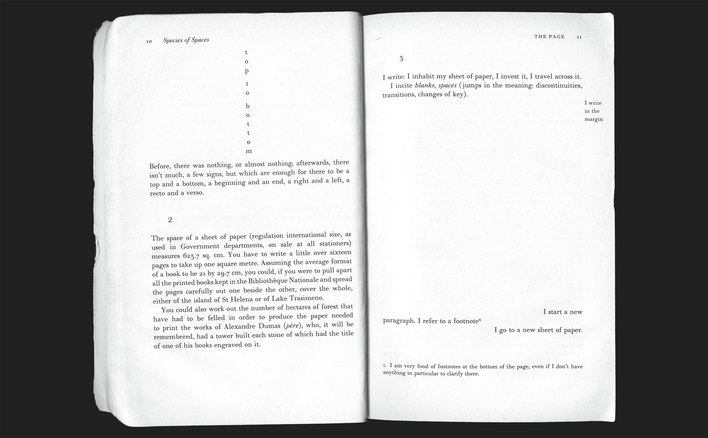
The aesthetic and structure of Perec’s 1968 experimental radio play The Machine suggest this interest in typography, layout and function of the page has always been a part of Perec’s practice.
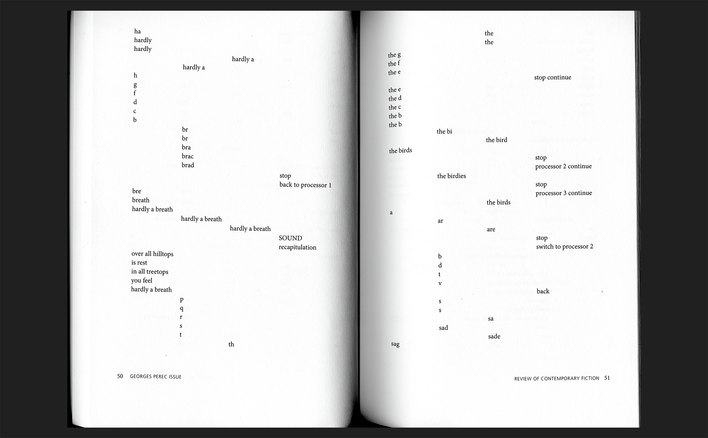
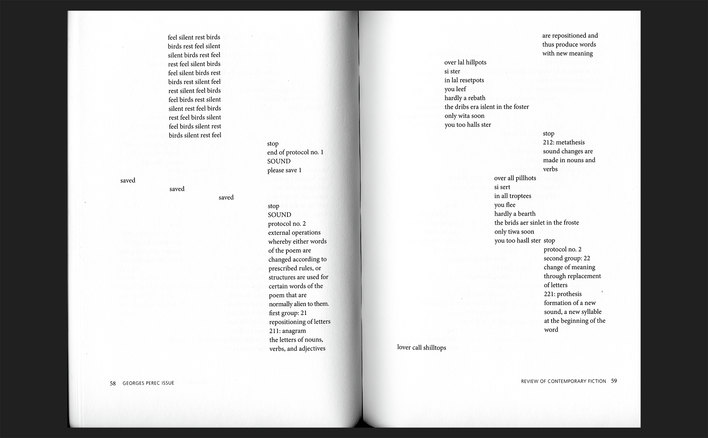
Reading his magnum opus Life, A User’s Manual (1978) is enchanting through its uniqueness and magnitude. It is an exhaustive investigation into the life and times of the inhabitants, past and present, of 11 Rue Simon–Crubellier, a Parisian apartment block: A rich and dense tapestry of multiple narratives, tales, adventures, puzzles, names, dates, seemly blurring fact and fiction… One source of inspiration for Perec was this illustration by Saul Steinberg, which appeared in his book The Art Of Living (1949), it depicts the multiverse accommodated in an New York apartment block.
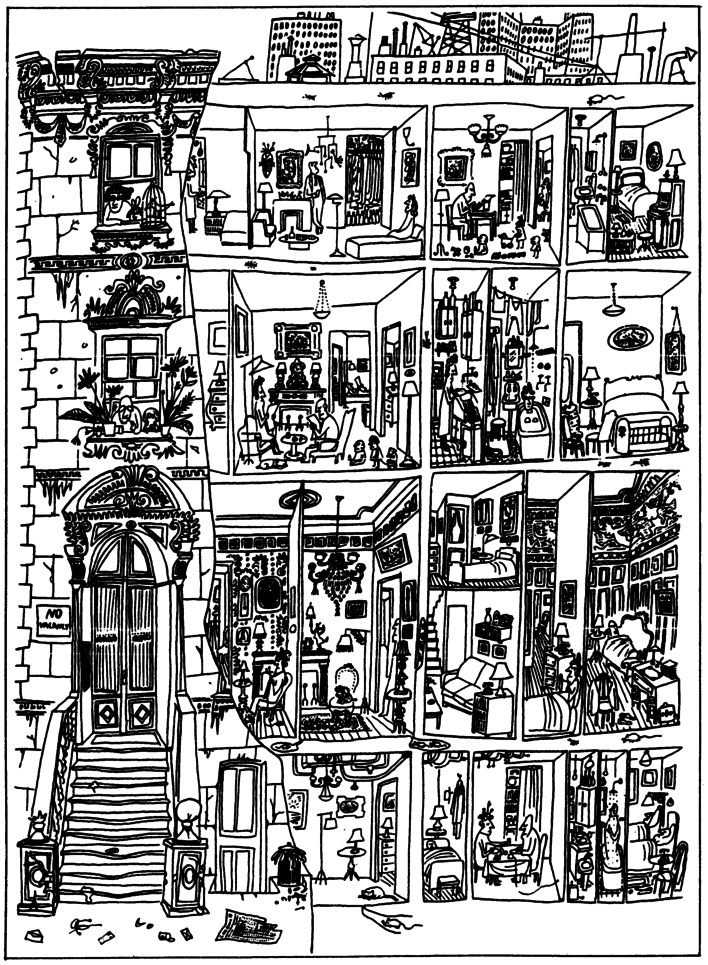
Whilst reading you become aware of certain elements and devices which suggest something hiding underneath, a structure, puzzle or game that the reader has unknowingly entered in with the author. It is a fascinating and alluring read.
One intriguing chapter is ominously titled ‘The Fifty-First Chapter’. It is the middle chapter. Perec lists 179 peculiar sentences; some refer to earlier events, some to the future. On closer examination I realised that each sentence contains 60 characters (including spaces), and the pages incorporate two diagonals of aligned ‘g’s, though they are not specifically referred to:
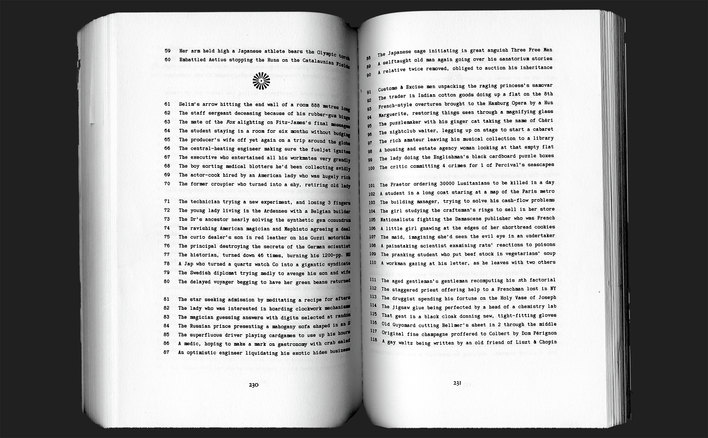
Here I’ve used a red diagonal rule to highlight the aligned ‘g’s:

A friend of mine bought me a copy of David Bellos’ comprehensive Perec biography Georges Perec: A Life in Words (1993), which details in depth the writing process, constraints and methods that Perec employed to write ‘Life, A Users Manual’. The layers of construction further add to the mind blowing achievement of writing such a book. This website exposes all the mind bending constraints Perec used.
One constraint was Perec constructed the novel based on the Knight’s Tour within a chessboard: “The knight is placed on the empty board and, moving according to the rules of chess, must visit each square exactly once”. He divided the apartment block into a 10 X 10 grid and followed the Knights Tours from character to character, room to room, chapter to chapter.
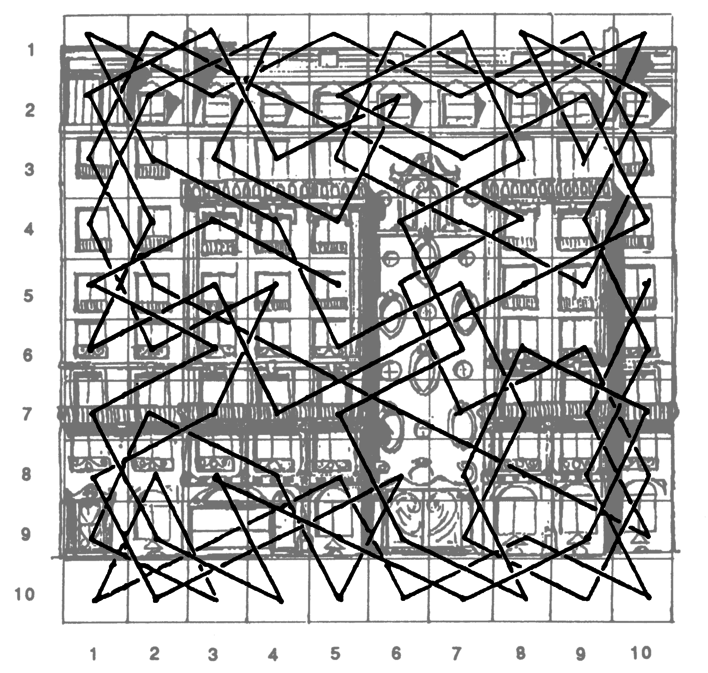
With every novel or piece of writing produced by Perec I cannot help but revere the mind behind it. A Void is a 300 page novel written without the letter ‘e’, working in both it’s native French, and the English translation by Gilbert Adair.
Through Perec’s writing I have discovered the wonders of the Oulipo, the creative processes of imposed parameters, and it has ignited a desire to live in the 17th arrondissement in Paris…
Published in the great We Made This blog, September 2011.